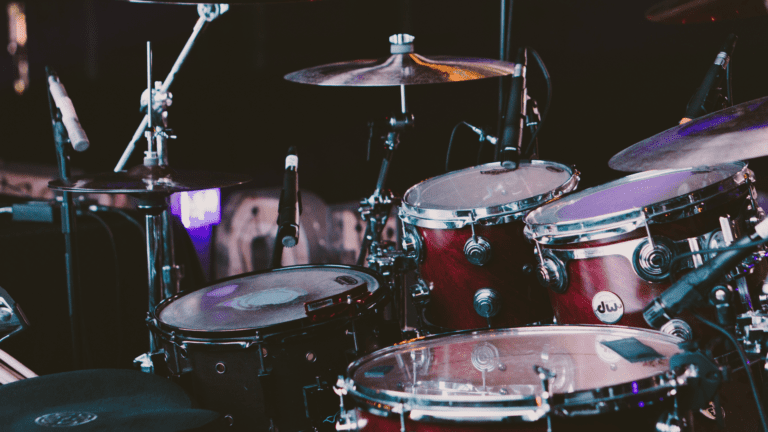6 Different Types of Drums You Need to Know About: A Comprehensive Guide!
Drums have been an essential part of human culture for thousands of years. They come in many different shapes, sizes, and types, and have been used for various purposes, from religious ceremonies to entertainment. In this article, we’ll explore the different types of drums and their unique characteristics.
What are the 6 types of drums?
- Acoustic Drums
Acoustic drums are the most traditional type of drums and are used in various music genres such as rock, jazz, and blues. They consist of a wooden or metal shell, a drumhead made of animal skin or synthetic material, and various hardware such as cymbals, stands, and pedals.
There are different types of acoustic drums, such as snare drums, bass drums, tom-toms, and floor toms. The snare drum is the most distinctive and recognizable of all acoustic drums, and it is characterized by its tightly stretched drumhead, snare wires, and sharp, crackling sound. The bass drum is the largest and deepest of all drums, and it is played using a foot pedal. Tom-toms are smaller drums with no snare, and they come in different sizes and pitches. Floor toms are similar to tom-toms but are larger and deeper, and they are usually placed on the floor. Acoustic drums are one of my favorite types of drums.
Types of Drums
- Electronic Drums
Electronic drums are an alternative to acoustic drums, and they use electronic sensors to trigger sounds, rather than a physical drumhead. They are popular in genres such as pop, hip-hop, and electronic dance music (EDM). They consist of drum pads, a drum module, and a sound system.
Electronic drums come in various sizes, and they can be configured to resemble acoustic drums or customized to meet the player’s preferences. They are quieter than acoustic drums, and they allow drummers to practice and perform without disturbing others. They also have various features such as built-in metronomes, recording capabilities, and a wide range of sounds and effects.
Types of Drums
- Hand Drums
Hand drums are percussion instruments that are played using the hands and fingers, rather than drumsticks or mallets. They come in various shapes and sizes, and they are popular in genres such as Latin, African, and Middle Eastern music.
There are different types of hand drums, such as congas, bongos, djembes, and darbukas. Congas are tall, narrow drums that produce a deep, resonant sound, and they are played using the hands and fingers. Bongos are smaller than congas, and they come in pairs. They produce a high-pitched sound and are played using the fingers and palms.
Djembes are African drums that have a wide base and a narrow top. They are played using the hands and produce a wide range of sounds, from deep bass to high-pitched tones. Darbukas are Middle Eastern drums that have a goblet shape and a single drumhead. They are played using the hands and fingers, and they produce a sharp, crisp sound.
Types of Drums
- Steel Drums
Steel drums, also known as pan drums, are a unique type of percussion instrument that originated in Trinidad and Tobago. They consist of a series of convex, metal drums arranged in a circular pattern. Each drum produces a different pitch, and they are played using rubber-tipped mallets.
Steel drums are popular in Caribbean music, and they have a bright, cheerful sound that is associated with the beach and island life. They come in various sizes, and they can be tuned to different keys, making them versatile and adaptable to different genres. They are probably one of the most unique types of drums.
Types of Drums
- Frame Drums
Frame drums are a type of hand drum that has a circular frame and a single drumhead. They are popular in Middle Eastern and Mediterranean music and are played using the hands or a drumstick.
There are different types of frame drums, such as the tambourine, the riq, and the bodhran. The tambourine is a small, handheld drum that has metal jingles attached to the frame. It produces a bright, jingling sound and is often used in folk music and pop music. The riq is a larger frame drum that has cymbals attached to the frame. It produces a rich, complex sound and is often used in Middle Eastern classical music. The bodhran is an Irish frame drum that has a goat skin drumhead and is played using a tipper or a drumstick. It produces a deep, booming sound and is often used in Celtic music.
Types of Drums
- Marching Drums
Marching drums are a type of drum that is designed for use in marching bands and drum corps. They are designed to be lightweight and durable, and they come in various sizes and shapes.
There are different types of marching drums, such as snare drums, bass drums, tenor drums, and cymbals. Snare drums are similar to acoustic snare drums, but they are designed to be lightweight and portable. They produce a crisp, sharp sound that is essential for keeping time in a marching band. Bass drums are larger than snare drums and produce a deep, booming sound that is essential for providing a strong, rhythmic foundation. Tenor drums are smaller than bass drums but larger than snare drums, and they produce a high-pitched sound. Cymbals are used to add accents and crashes to the marching band’s sound.
Types of Drums Conclusion:
In conclusion, drums come in various shapes, sizes, and types, and they have been an essential part of human culture for thousands of years. From the traditional acoustic drums to the modern electronic drums, each type of drum has its unique characteristics and features. Hand drums, steel drums, frame drums, and marching drums all have their place in different music genres and cultural traditions. As such, drummers and percussionists have a wide range of options to choose from, allowing them to express themselves creatively and add unique flavors to their music.




